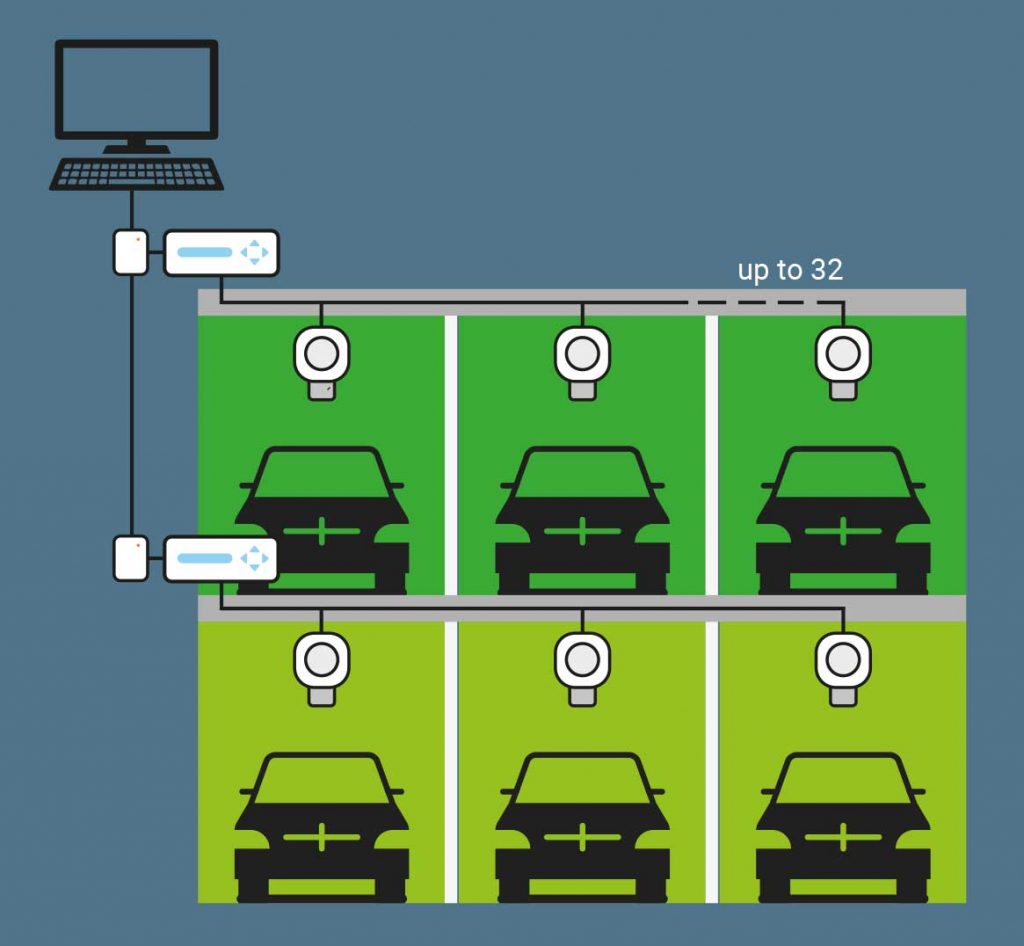Detection of toxic gas concentrations in underground parking garages
The presence of gasoline or diesel-powered vehicles operating in an enclosed environment such as a parking garage can cause the concentrations of toxic gases such as Carbon Monoxide (CO) to accumulate to unsafe levels.
The need of gas concentrations detection in parking garages
Monitoring toxic gas concentrations in parking garages is necessary for two main reasons:
- Health hazard: The exhaust gases from fossil-fuel powered vehicles contain Carbon Monoxide, a colorless and odorless gas which at high concentrations can be extremely dangerous to humans and animals. CO poisoning can cause headaches, fatigue, nausea, and even death in extreme circumstances.
- Energy efficiency: Ventilation systems are often utilized to reduce the concentrations of toxic gases within a parking garage; however, continuous operation of these systems may decrease the energy efficiency of the facility and lead to increased maintenance and energy costs. .
Solution: gas detection system
The installation of a gas detection system to accurately measure the real-time concentration of CO, and to automatically control the activation of countermeasures such as ventilation fans and alarms, will result in a significantly safer and more energy-efficient facility.
Carbon Monoxide and Allarm levels
Depending on the region in which the gas detection system is installed, there may be different standards or regulations pertaining to the maximum allowable CO concentrations and the CO alarm levels.
Some examples of existing CO standards include those from OSHA, NIOSH, ACGIH, as well as the International Mechanical Code.
The typical alarm levels and subsequent countermeasures for CO detection systems in enclosed parking garages are as follows:
- Pre-alarm: 25ppm. Activation of the first stage of the ventilation system.
- Alarm 1: 50 ppm. Second stage activation of the ventilation system.
- Alarm 2: 100 ppm. Activation of the third stage of the ventilation system and signaling of the state of attention to the control personnel with acoustic and visual systems.
Seitron gas detection system
The detection system proposed by Seitron consists of a set of gas concentration transmitters connected to each other via an RS485 field bus and Modbus® RTU protocol. The transmitters communicate with a control unit (RYK01M), which has relays activated by the individual gas concentration thresholds as well as some auxiliary relays for customized functions.
The strategic positioning of the transmitters depends on the design of the space where the system is located and may also include the use of ATEX transmitters.
To allow for surveillance of the system status, as well as to intervene to change the activation thresholds, we provide a Modbus® /Modbus® gateway (ACIMB2), which relaunches the bus status to a supervision device that can be a simple desktop PC or a BMS system, possibly based on a PLC.

Final considerations
The RYK01M control unit can be connected to up to 32 transmitters sensitive to various types of gases, from NO2 to CH4, from LPG to gas vapors.
In addition, the managing software allows you to manage multiple control units at the same time, allowing you to expand the areas to be monitored as desired. E.g. you can use a RYK01M for every floor of the parking garage.